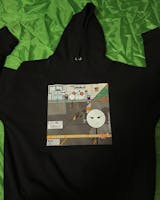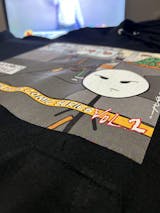DTF prints are shaped in accordance with various environmental conditions, making the surface to be printed and the type of printing sustainable. It is very advantageous to prioritize sustainable printing types by using environmentally friendly product materials. In addition, dtf printing is very useful in preventing waste, recycling and reusing waste by making less printing waste, and reducing the production of waste. In order to include DTF printing in a zero waste lifestyle, environmentally friendly products should be preferred and at the same time, it should be aimed to recycle printing waste and used fabric surfaces. Instead of materials that will go to waste, materials that support environmentally friendly zero waste projects and enable the reuse of products can be preferred for the surfaces to be printed.
For dtf printing to fit the zero waste lifestyle, textiles must be recyclable. Prints made from recyclable materials often do not go to waste and are considered zero waste. If the materials used within the scope of zero waste, such as paper or fabric, are used with recyclable materials, a zero waste lifestyle is adopted for DTF printing. Drawn projects, designs, used surfaces and printing equipment can be determined in accordance with the zero waste lifestyle. In this way, DTF printing becomes more environmentally friendly with environmentally friendly designs and materials.
What Can Be Done in Dtf Printing for a Zero Waste Lifestyle?
Various methods can be used to adopt a zero waste lifestyle in DTF printing. Care can be taken to ensure that the materials used in printing are environmentally friendly and that the inks contain fewer chemicals. However, the films to be printed can be produced from recyclable materials. By minimizing waste in printing, waste on the job should be avoided and a system should be designed to recycle waste materials.
In order to prevent the used DTF films or surfaces from going to waste, trial prints can be made or they can be cut and made suitable for reuse. It is important to choose recyclable fabric to give importance to and implement zero waste for printing on clothing and textile fabrics. The garments are zero waste suitable for dtf printing, with fabrics suitable for recycling. By choosing materials that can be reused without generating waste, an environmentally friendly printing process is completed.
Packaging with Recyclable Materials
When performing DTF printing, environmentally friendly prints can be achieved in a zero-waste manner by encouraging both customers and manufacturers to recycle or reuse objects. While the materials and inks used in printing are environmentally friendly, it is necessary to inform everyone about environmentally friendly products. In this way, printing operations are completed in a more careful and environmentally friendly manner within the scope of zero waste. It is very important to choose recyclable materials, especially in the packaging of successfully completed prints during delivery to the customer.
In order for packaging products to be evaluated in a way that is suitable for recycling and within the scope of zero waste without going to waste, materials should be selected accordingly. If the packaging materials are suitable for zero waste, a very advantageous situation arises for both the customer and the company. Packaging and wrapping options are completed with environmentally friendly method, protecting the environment and zero waste. In this regard, various events can be organized to offer these opportunities to customers to print textile products using sustainable and recyclable materials. In this way, a cleaner environment will be created and printing processes will be completed successfully with environmentally friendly materials suitable for recycling.








